The Museu Nacional dos Coches (National Coach Museum) has one of the world’s most important collections of historic coaches and carriages. The museum first opened in 1905 in a former horse riding school in Belém.
History
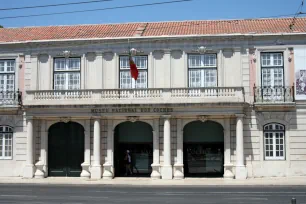
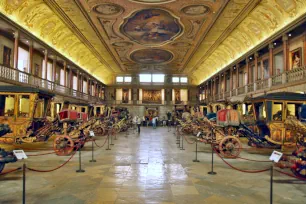
The history of Lisbon’s National Coach Museum goes back to the year 1900, when a collection of Portuguese royal coaches was put on display at the Universal Exhibition in Paris.
Queen consort Amelia of Portugal, who had been the driving force behind the exhibition of the coaches, decided to create a permanent museum. She moved coaches, carriages and related items from the monarch’s many royal palaces to a former horse riding school at the royal palace of Belém.
When the museum opened in 1905 as the Royal Coach Museum, it had a collection of twenty-nine coaches and carriages. The collection expanded over time, and it is now one of the largest in the world. In 1910, when Portugal was declared a republic, the name of the museum was changed to National Coach Museum.
The Building
The royal building that houses the historic vehicles is an attraction in its own right. It was built on the orders of prince John, the future King John VI, and replaced an older riding school from 1726.
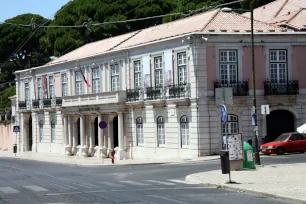

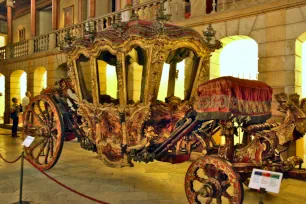
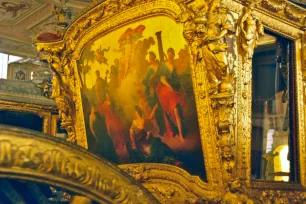
The Italian architect Giacomo Azzolini designed a neoclassical structure with a large central arena, fifty meters long. Construction started in 1787, but due to the elaborate decorations, the building would only be completed in 1828.
While the building’s exterior is rather subdued, the interior in contrast is sumptuously decorated with ceramic panels, tapestries, large paintings, Ionic columns and marble pilasters. The central hall, where horses were exercised, has a magnificent ceiling with large painted canvases that depict mythical and allegorical figures. Royals watched the horses perform from the richly decorated balustrades.
The Collection
The National Coach Museum has about forty-five coaches and carriages on display from the seventeenth to the nineteenth centuries. The majority of these were ceremonial vehicles owned by the Portuguese royal family.
The oldest coach in the museum and one of the oldest in the world is the black and red coach of king Philip II (Philip III of Spain), made in Spain in the early seventeenth century. It looks rather basic on the outside, with little decoration despite its luxurious red velvet interior. Over time, the coaches became status symbols and the decorations on the coaches became more and more elaborate as the royals tried to one-up each other.
Some of the most sumptuous coaches can be found at the back of the central hall, including three coaches made for the ambassador to the pope. The coaches, built in 1716 in Rome, are decorated with large gilded sculpture groups.
Another highlight is the ceremonial coach that was built in the first half of the eighteenth century for king John V. It is decorated with intricately carved woodwork attributed to sculptors José and Félix de Almeida. Paintings on the side panels show mythical figures. The panels are framed with gilded woodwork decorated with small statues. Even the spokes on the wheels have gilded ornaments.
The coach of Anna I of Austria was built in 1708 on the occasion of her marriage with king John V. It is said to be the first coach decorated with gilded woodwork. The large painting on the rear panel of the coach depicts the crowning of Minerva. Statues on the corners represent Europe, America, Africa and Asia.
The museum has more than just coaches and carriages; there is also a collection of accessories such as coach harnesses, beautiful saddles and even an eighteenth-century war drum. You can also see a pink velvet mantle of Queen Amélia, the founder of the museum.

